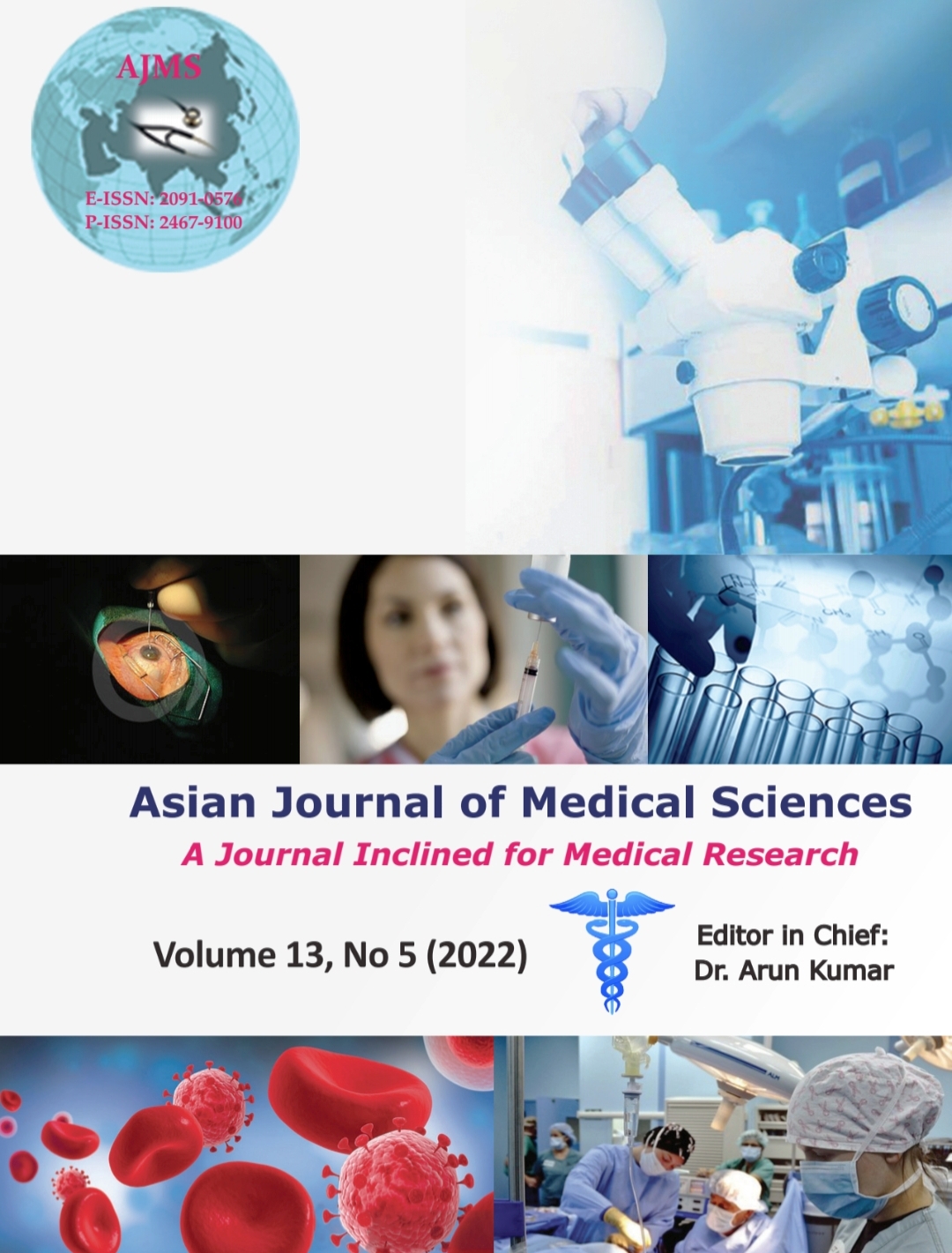Study of estrogen receptor, progesterone receptor, and HER-2/neu status in breast carcinoma
Keywords:
Breast carcinoma, Estrogen receptor, Progesterone receptorAbstract
Background: Breast cancer treatment depends mainly on hormone receptors (estrogen and PRs) and human epidermal growth factor receptor-2 (HER2)/neu profile. These receptor analyzes determine the patient’s prognosis, treatment, and outcome.
Aims and Objectives: The main objective of this study was to correlate the histologic grade of breast carcinoma with hormone receptors and HER2/neu status.
Materials and Methods: This is a retrospective analysis of 342 patients treated from January 2016 to December 2021 at Manipal Teaching Hospital, Pokhara, Nepal to determine hormone receptors and HER2/neu status in breast carcinoma. Modified radical mastectomy, breast-conserving surgery, toilet mastectomy, and excisional biopsies were included for statistical correlation between hormone receptors, HER2/neu, histologic grade, and lymph node status.
Results: The mean age of the patients was 48.43±9.4 years (29–71). Of the 342 patients, 334 (97.7%) were female and 8 (2.3%) were male. Left breast carcinoma was 5.3% more common than right breast carcinoma. Among them, 34 (9.9%), 245 (71.6%), and 63 (18.4%) were grade I, II, and III, respectively. Grade II were the most common cancer. The smallest tumor size was 0.5 cm and the largest tumor size was 14 cm. Lymph node involvement was 226 (66.1%). The most common histology was invasive ductal carcinoma with 282 (82.5%), lobular carcinoma with 47 (13.8%), medullary carcinoma with 9 (2.6%), and mucinous carcinoma with 4 (1.2%). Immunohistochemical analysis of all breast cancer patients in the present study revealed ER 175 (51.2.7%), PR 146 (42.7%), and HER2/neu 93 (27.2%). Of all male patients, ER was 100% positive, PR was 75% positive, and HER2/neu was 25% positive. According to grading, ER was seen positive in 23 (13.1%) in grade I, 112 (64%) in grade II, and 40 (22.8.1%) in grade III carcinoma (P<0.05). Similarly, PR was 19 (13.1%) in grade I, 95(65.9%) in grade II, and 30 (20.8%) in grade III carcinomas (P<0.05). Moreover, Her/2-neu was 7 (7.5%) in grade I, 63 (67.3%) in grade II, and 23 (24.7%) in grade III carcinomas (P<0.05). In HER2/neu positive cases, it was observed that the positive expression of estrogen receptor (ER) was high as compared to PR.
Conclusion: ERs, PRs, and HER2/neu are the most important factors that determine the best treatment, prognosis, and outcome in breast carcinoma.
Downloads
Downloads
Published
How to Cite
Issue
Section
License
Copyright (c) 2022 Asian Journal of Medical Sciences

This work is licensed under a Creative Commons Attribution-NonCommercial 4.0 International License.
Authors who publish with this journal agree to the following terms:
- The journal holds copyright and publishes the work under a Creative Commons CC-BY-NC license that permits use, distribution and reprduction in any medium, provided the original work is properly cited and is not used for commercial purposes. The journal should be recognised as the original publisher of this work.
- Authors are able to enter into separate, additional contractual arrangements for the non-exclusive distribution of the journal's published version of the work (e.g., post it to an institutional repository or publish it in a book), with an acknowledgement of its initial publication in this journal.
- Authors are permitted and encouraged to post their work online (e.g., in institutional repositories or on their website) prior to and during the submission process, as it can lead to productive exchanges, as well as earlier and greater citation of published work (See The Effect of Open Access).




